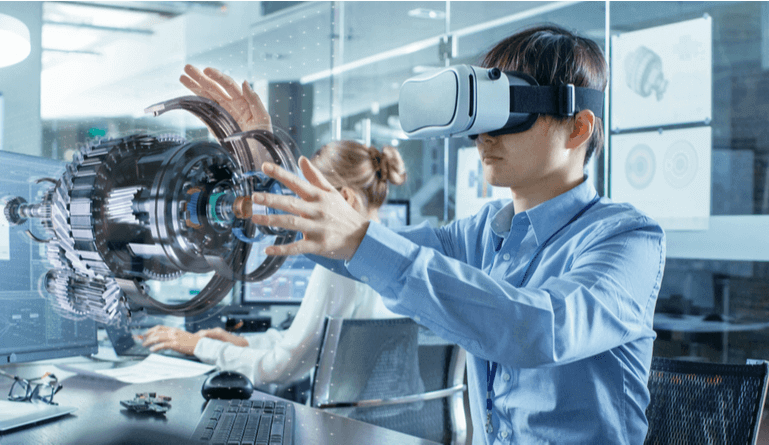As virtual reality technology takes its place as a strong tool for eLearning design, more and more businesses are asking, “what’s next?”
Virtual reality learning is so useful because it helps to transport the user to another place. Trainees can gain experience in high-pressure situations without being in any danger, or get hands-on learning to handle complex equipment without costing their employer thousands of dollars. VR training can even increase a learner’s information retention over traditional methods because it is so experiential.
It stands to reason then, that the more life-like their VR experience is, the better-prepared workers will be to handle the real thing. The next logical step is to create an environment with objects that are available to interact with, adding to the realistic visual background.
With major players like Facebook and Google adopting 3D modeling for advertising and Playstation and others using 3D models to enhance gaming experiences, organizations keen on using VR as an educational platform should take note. And the demand for 3D model support in corporate learning management systems has been growing in recent years.
3D models enhance immersive learning by making virtual experiences even more tangible. Learning by doing is a cliche for a reason. Workers who do a task get practice in problem-solving in a way that watching videos, taking notes, or participating in discussions just don’t offer.
Applied learning has long been embraced in the academic field, and corporations are catching on. Experiential learning has the potential to alter and improve the way businesses think about training exercises.
Given the value of hands-on learning, implementing manipulative 3D models into VR learning experiences just makes sense. One of the strengths of 3D virtual models is that they can be moved across three separate planes. Instead of just clicking to move around, or zooming in on a static piece of the VR background, 3D models can be rotated in any direction, moved around, and even taken apart.
This ability to remove pieces and view them from any angle is crucial to the feeling of true hands-on learning. For example, medical teams can use VR to pick up a respirator mask, pull out all of the pieces, rotate them each individually to discover what they’re for and how they work, and learn how to put them on through instruction. Undoubtedly, digitally building a mask from the ground up provides a better insight into the learner than just watching an animated actor put one on.
As more and more business moves to remote, online models, workers are starting to experience electronic burnout. Adding another online forum or training exercise may further exhaust individuals, instead of helping them learn. VR experiences are a fun (and effective) way to break up the monotony of video conferencing, typing, and reading on a screen.
Additionally, digitally immersive environments allow people to feel more like they are sharing a location and experience. Workers can practice behaviors and solutions in the same space as their colleagues, even if they don’t share an office.
For all the benefits of 3D models, this is still a new technology for the average person. Any implementation should include easy access to IT support and thorough testing before it is widely released. When workers hear “virtual reality,” they may immediately assume they need a complex headset.
Headsets are definitely a great tool and can be utilized, but 3D technology can also be accessed through smartphones, tablets, laptops, and cardboard viewers. It doesn’t need to be elaborate or difficult to adapt to have the desired benefits of experiential learning.
Typically, training is created to help workers learn to do their jobs better, improve company culture, and provide opportunities for growth. Virtual learning with 3D models helps forward these goals by providing a first-hand experience that holds the attention of trainees, allows them to examine virtual objects at close-range, explore what sparks their interest, and remember and apply that knowledge when they need it.
John Blackmon, CTO
John Blackmon brings decades of engineering and management expertise in the eLearning industry to his role as CTO of eLearning Brothers, a global provider of templates, custom design, authoring and learning management tools, and training for professionals everywhere.
Previously CEO of Trivantis, John has worked with a variety of brands and was involved in development and strategy for Trivantis, BocaSoft, Electronic Data Systems, and IBM.
He led the development of the leading authoring tool Lectora and the virtual reality course builder CenarioVR. His efforts led to the filing of two separate patents in software and Responsive Course Design. John holds a Bachelor of Science in Electrical Engineering from the Florida Institute of Technology.





